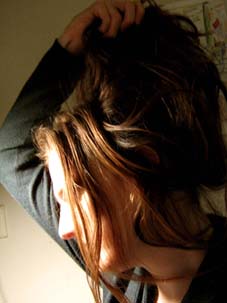The debate about the headwear of Muslim women has risen again in Denmark. This time it is fuelled by the case of a child minder who, according to some, wears a burka during working hours.
First of all, I think we should set things straight with respect to religious head wear. As far as I understand this is a burka and this is a niqab. The latter is what the child minder in Odense wears. Secondly, she puts on the niqab when she goes outside. In her home she wears a headscarf tied under the chin; allowing the children to see her face and expressions.
In the Danish debate a major argument for a ban against headscarves is that they are, supposedly, symbols of the oppression of women. In the case of symbols (please pay special attention to the word!) Danish politicians seem very willing to take action. Since the Danish Minister of Family Affairs recognized the municipality of Odense’s right to forbid their employees to wear religious clothing, there has been no end to the political announcements. A spokesperson from the Danish Liberal Party, one of the parties in government, describes it as a ‘freedom right’ that the Danish municipalities are allowed to ban religious clothing to their likening. Next to Odense several other municipalities have declared that they will make use of this freedom. In the case of symbols there is a lot of political goodwill when it comes to using regulation as a tool to, supposedly, improve women’s conditions.
Let us turn away from religious clothing for a moment and look at case that, to me and many others, is an unambiguous expression of the suppression of women. Some call it the oldest profession in the world. Others call it exploitation of women’s bodies. I am talking about prostitution. An estimate is at least 4,730 (the far majority being women) are selling their bodies in Denmark. There is a serious lack of knowledge about prostitution in my home country, but here are some European facts:
- Data provided by the British Medical Journal on the experience of client violence against women prostitutes indicates that 93 % of women had an experience of client violence (British Medical Journal: Do you want the latest evidence? “Personal characteristics, drug use, and experience of client violence by prostitutes working indoors or outdoors”, downloaded 17/2/2003)
- Around 80 % of women in prostitution have been sexually abused in their childhood (Fact sheet on Human Rights Violations, Prostitution Research & Education, Melissa Farley, http://www.prostitutionresearch.com/)
- The average age of women entering into prostitution is 13 or 14; there is no evidence to suggest that this age is decreasing (La prostitution un métier comme un autre?”, Yolande Geadah ; VLB éditeur, 2001, p. 137)
Data is compiled by womenlobby.org
As Reden, a drop-in centre for women in the prostitution environment in Copenhagen, explains on its web page:
“Prostitution – to sell you own body via prostitution and pornography – will always be the extreme sale and a situation that can be compared to nothing else. There are situations where people think they only have their body left to trade with, or situations where the body is the only demanded commodity. […] It often has long-term and destructive consequences when a woman has to let her body invade by thousands of men she does not herself desire. To survive she will have to switch off her emotions and ability to feel. The price can be that it will become ever more difficult to turn on her feelings again. The woman risks developing insensitivity towards other people, depression and the lack of ability to feel herself and her own needs.” (my translation from Danish)
Talking about offense against women’s rights prostitution is an obvious case. Still, myths of “the happy prostitute” and “prostitution is a woman’s personal choice” are alive and well in Denmark (and many other countries for that sake). Unlike the war against headscarves, supposedly symbols of suppression of women, there is not much political goodwill when it comes to prostitution. In the case of symbols politicians are more than willing to make rules and regulations. In the case of physical exploitation of women it is almost a taboo to talk about criminalizing the buyer. Sweden and Norway, two countries we normally compare ourselves to, have already passed laws. Still, there is very little discussion about banning the purchase of sex in Denmark. Maybe the symbolic value is not high enough?
Or perhaps is the suppression of women not really on the agenda of Danish politicians? Many of them seem to regard symbols as a much more grave manifestation of offense than actual physical abuse. At the end of the day the fight against symbols is unrelated to women’s rights. It appears to be just another expression of hostility towards Muslim culture and Muslims.
A selection of the (scarce) resources available on prostitution in Denmark (Danish-language):
Publications from 'Theme Prostitution' ('Theme Prostitution' is an activity under a government agency)
The extent of prostitution in Denmark
Facts about prostitution compiled by the Danish Socialist People's Party
What's up, Europe? Gender, media and European integration. The story of a a young Dane exploring the continent.
Subscribe to:
Post Comments (Atom)


No comments:
Post a Comment